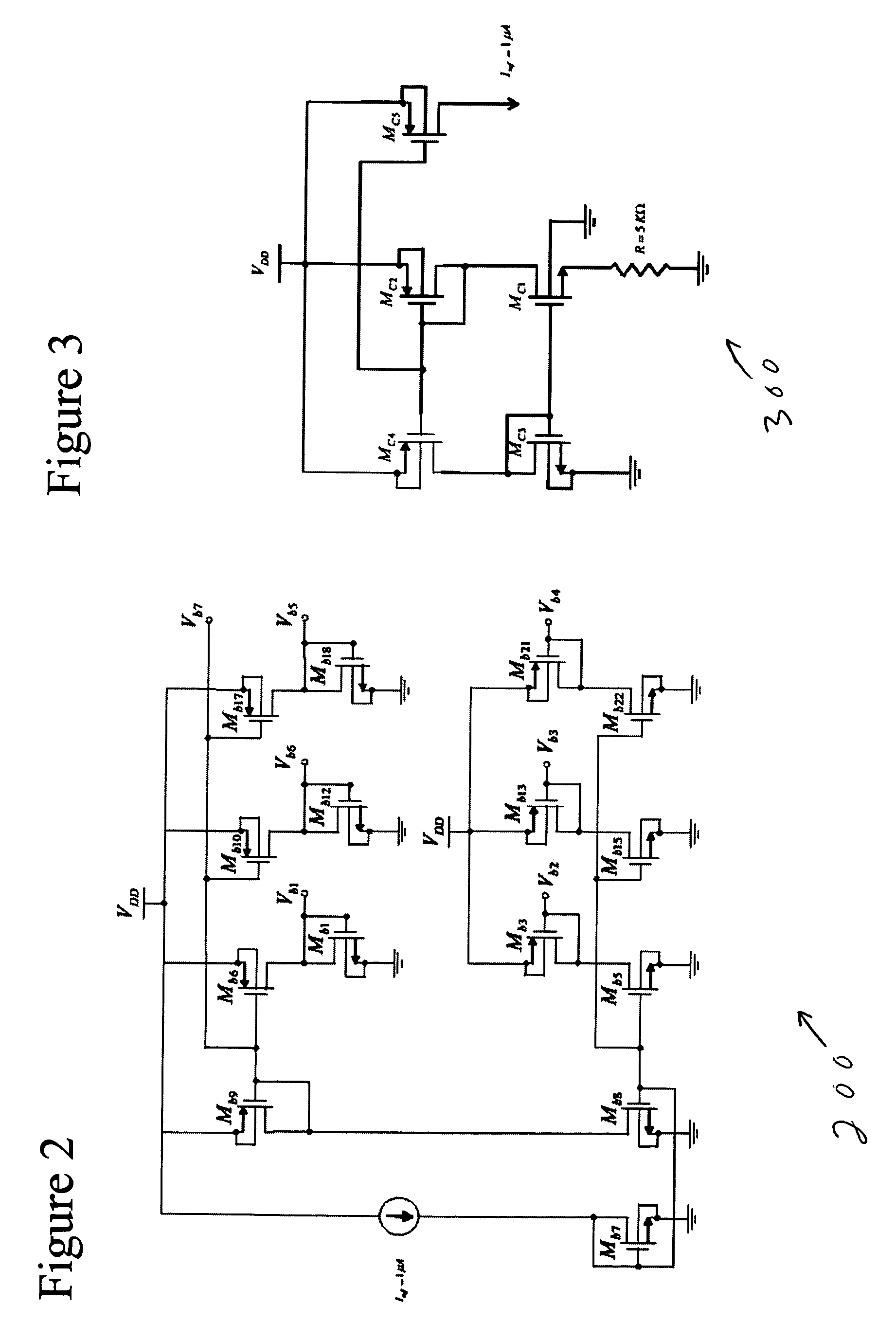High-gain, bulk-driven operational amplifiers for system-on-chip applications
a technology of operational amplifiers and system-on-chips, applied in the direction of dc-amplifiers with dc-coupled stages, amplifiers with semiconductor devices/discharge tubes, different amplifiers, etc., can solve the problems of low gain disadvantage of bulk-driven techniques and inherently poor so as to reduce the threshold limitation of mosfet transistors and improve the gain of bulk-driven amplifiers. , the effect of increasing th
- Summary
- Abstract
- Description
- Claims
- Application Information
AI Technical Summary
Benefits of technology
Problems solved by technology
Method used
Image
Examples
Embodiment Construction
[0019]A preferred embodiment of the present invention will be set forth in detail with reference to the drawings, in which like reference numerals refer to like elements throughout.
[0020]The amplifier core 100 of an OTA is illustrated in FIG. 1. This circuit is based on a fully differential topology with two complementary input pairs 102, 104. The output branch 106 includes common gate amplifiers M7, M8 with cascode current loads 108, 110 to increase the gain. A common mode feedback circuit (CMFB) 112, 114 is used with four auxiliary common source amplifiers. The operation of the OTA is explained in greater detail below.
[0021]Rail-to-rail operation is achieved using a pair of PMOS (102; M5 and M6) and NMOS (104; M33 and M34) transistors at the input stage. This strategy supports rail-to-rail (0 volt to 0.8 volt) operation of the amplifier; thus, the input common mode range (ICMR) is extended to the largest possible range. This increased range is achieved because when the input commo...
PUM
 Login to View More
Login to View More Abstract
Description
Claims
Application Information
 Login to View More
Login to View More - R&D
- Intellectual Property
- Life Sciences
- Materials
- Tech Scout
- Unparalleled Data Quality
- Higher Quality Content
- 60% Fewer Hallucinations
Browse by: Latest US Patents, China's latest patents, Technical Efficacy Thesaurus, Application Domain, Technology Topic, Popular Technical Reports.
© 2025 PatSnap. All rights reserved.Legal|Privacy policy|Modern Slavery Act Transparency Statement|Sitemap|About US| Contact US: help@patsnap.com



